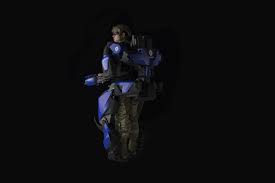
Breaking News
 How To Become Competent, Confident, and Dangerous, with guest Doug Casey
How To Become Competent, Confident, and Dangerous, with guest Doug Casey
 My Hot Take On Bill Gates' Climate Change Essay | Alex Epstein #457 | The Way I Heard It
My Hot Take On Bill Gates' Climate Change Essay | Alex Epstein #457 | The Way I Heard It
 Discussion on Covid Vaccination Should Be Non-Controversial
Discussion on Covid Vaccination Should Be Non-Controversial
Top Tech News
 HUGE 32kWh LiFePO4 DIY Battery w/ 628Ah Cells! 90 Minute Build
HUGE 32kWh LiFePO4 DIY Battery w/ 628Ah Cells! 90 Minute Build
 What Has Bitcoin Become 17 Years After Satoshi Nakamoto Published The Whitepaper?
What Has Bitcoin Become 17 Years After Satoshi Nakamoto Published The Whitepaper?
 Japan just injected artificial blood into a human. No blood type needed. No refrigeration.
Japan just injected artificial blood into a human. No blood type needed. No refrigeration.
 The 6 Best LLM Tools To Run Models Locally
The 6 Best LLM Tools To Run Models Locally
 Testing My First Sodium-Ion Solar Battery
Testing My First Sodium-Ion Solar Battery
 A man once paralyzed from the waist down now stands on his own, not with machines or wires,...
A man once paralyzed from the waist down now stands on his own, not with machines or wires,...
 Review: Thumb-sized thermal camera turns your phone into a smart tool
Review: Thumb-sized thermal camera turns your phone into a smart tool
 Army To Bring Nuclear Microreactors To Its Bases By 2028
Army To Bring Nuclear Microreactors To Its Bases By 2028
 Nissan Says It's On Track For Solid-State Batteries That Double EV Range By 2028
Nissan Says It's On Track For Solid-State Batteries That Double EV Range By 2028
Sarcos robo-suit turning Delta crews into superhuman man-machines

At this year's CES, the Salt Lake City-based robotics specialist and Delta Airlines announced pilot trials, with Delta employees set to be among the first workers to suit up in the battery-powered, force-multiplying wearable robots, enjoying superhuman strength and endurance without body wear and tear.
Few things make us want to trade a cushy gig of rambling away about gadgets semi-coherently on the Web for a life of physical labor like the Guardian XO. A full-body robotic suit that turns its wearer into something of a near-cyborg superhero, the XO looks straight out of a dystopian sci-fi thriller and brings the capabilities to match. It bears its own substantial weight, along with 200 additional pounds (91 kg) of payload, letting the wearer lift heavy objects for hours without physical strain or fatigue.
Sarcos says the Guardian XO takes under 30 seconds to put on or take off, responds in milliseconds to the operator's movements, and amplifies his or her strength by up to 20 times. It offers eight hours of battery power, and a hot-swapping battery system allows users to extend that operational time. All in all, it's a highly impressive machine meant to help humans complete obligatory lifting tasks that would be difficult or impossible to tackle with more conventional lifting machinery.

 Dark Tidings
Dark Tidings Carbon based computers that run on iron
Carbon based computers that run on iron

